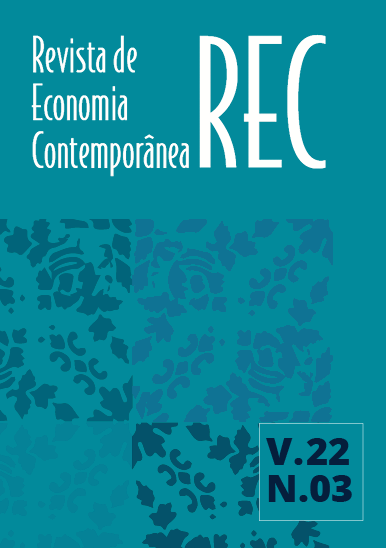O IMPACTO DOS INVESTIMENTOS EM P&D NO DESEMPENHO DAS EMPRESAS: APLICAÇÕES NO USO DE REGRESSÃO QUANTÍLICA COM VARIÁVEIS INSTRUMENTAIS [THE IMPACT OF INVESTMENTS IN R&D ON FIRM PERFORMANCE: APPLICATIONS OF QUANTILE REGRESSION WITH INSTRUMENTAL VARIABLES]
Keywords:
inovação, crescimento, P&D, regressão quantílicaAbstract
RESUMO: O estudo analisa o impacto dos investimentos em P&D nas vendas das firmas, tomando uma amostra de 2.000 firmas. Usando a técnica de variáveis instrumentais na regressão quantílica, o coeficiente de elasticidade em P&D apresentou-se consideravelmente maior em relação ao método tradicional (estimador de Koenker e Bassett) e com inversão de tendência com aumento dosquantis. O estimador de regressão quantílica com variáveis instrumentais revela os riscos de tendenciosidade e inconsistência quando o pressuposto de exogeneidade é violado. Ao contrário dos resultados apresentados na literatura, as implicações deste estudo mostram que firmas com maior volume nas vendas (quantis superiores da distribuição condicional) obtêm maior retorno no uso dos investimentos em P&D.
PALAVRAS-CHAVE: inovação; crescimento; P&D; regressão quantílica
=========================
ABSTRACT: This study analyzes the impact of R&D in firms’ sales levels, taking a sample of 2,000 firms. Using the technique of instrumental variables in the quantile regression, the coefficient of elasticity in R&D demonstrated to be considerably higher compared to the traditional method (Koenker and Bassett estimator) and a trend reversal with rising quantile. The estimator of the quantile regression with instrumental variables reveals the risks of bias and inconsistency when the exogeneity assumption is violated. Unlike the results presented in the recent literature, the implications of this study show that firms with higher sales (higher quantis of conditional distribution) obtain higher returns on the use of R&D investments.
KEYWORDS: innovation; growth; R&D; quantile regression


